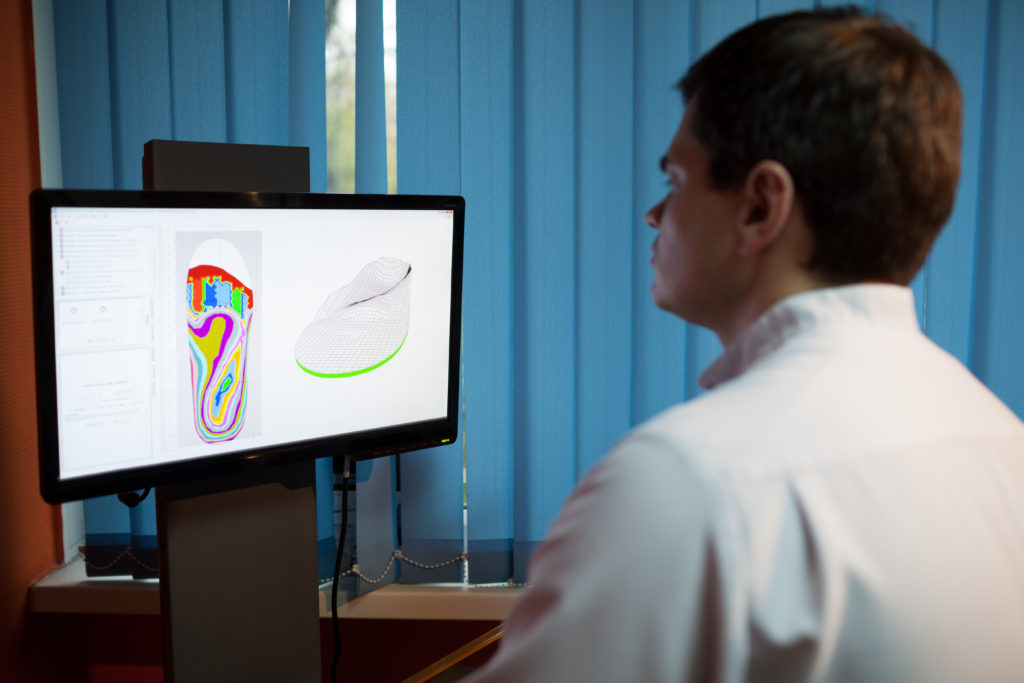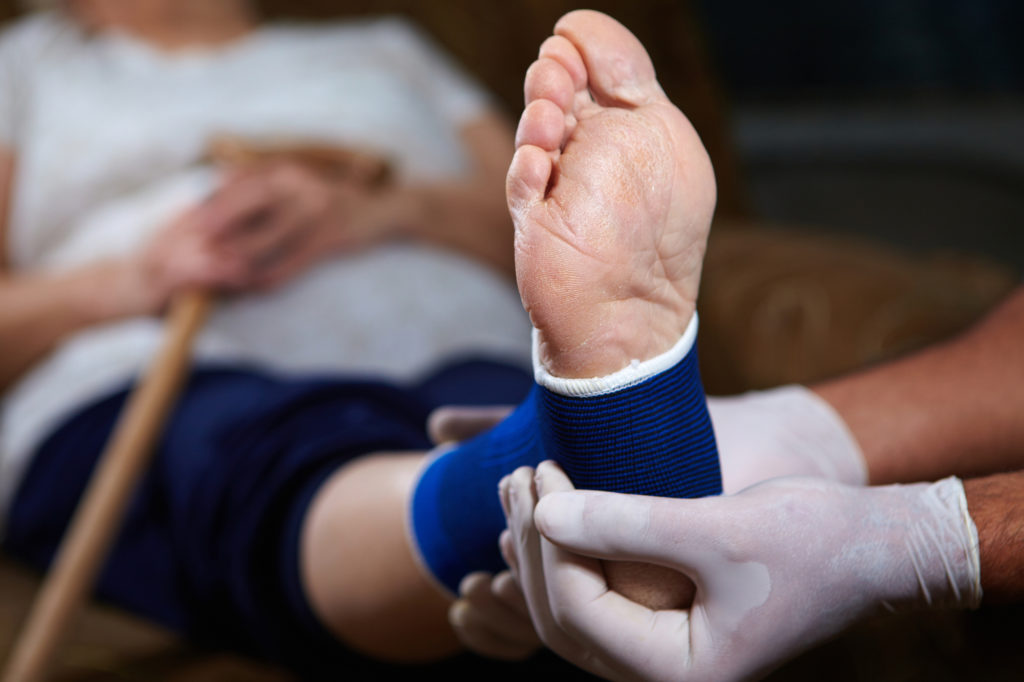 When it comes to Plantar Fasciitis, there’s no such thing as a one-size-fits-all treatment plan. And while most podiatrists agree that heel pain can often be treated simply and effectively at home, some cases of complex, stubborn, or chronic Plantar Fasciitis require surgery or medical interventions.
When it comes to Plantar Fasciitis, there’s no such thing as a one-size-fits-all treatment plan. And while most podiatrists agree that heel pain can often be treated simply and effectively at home, some cases of complex, stubborn, or chronic Plantar Fasciitis require surgery or medical interventions.
In these cases, making an informed decision with your medical provider and learning all you can about a particular medical procedure can make all the difference in a positive outcome.
Topaz surgery (Topaz MicroDebrider) has recently gained popularity as a minimally invasive medical treatment for chronic and resistant cases of Plantar Fasciitis. But how effective is this new treatment? Are you a good candidate for topaz surgery? What are the possible risks involved? And how much will it cost?
In this post, we’ll cover everything you need to know about the Topaz Procedure:
What You Need to Know About Topaz Surgery
While the Topaz Procedure has gotten a lot of attention lately, the procedure isn’t actually new. Topaz has been researched and developed over the past 10 years. Here’s what you should know:
What Is Topaz Surgery?
Topaz Surgery, also called Topaz Coblation therapy, is a medical procedure that treats chronic Plantar Fasciitis and Achilles Tendonitis. In the procedure, the doctor uses a special needle-like wand to create two or three dozen small holes, a quarter inch apart, in a grid pattern over the plantar fascia. As the wand enters the skin and fascia, it emits a small burst of radio wave energy, which creates a tiny cut and removes a small amount of tissue.
These small cuts help break up scar tissue on the fascia, stimulate a healing response from the body, and increase blood flow and circulation to the injured fascia. The procedure may be performed with either local anesthesia or sedation and takes only 10-20 minutes.
How Invasive Is the Topaz Procedure? Does It Hurt?

One of the best things about Topaz is that, especially compared to fascia release surgery, the procedure is very minimally invasive. The small puncture holes created along the fascia don’t do much damage to healthy tissue, and help reduce trauma to the foot.
Because you will be given either local anesthesia or a light sedative, you should not experience any pain during Topaz, but may feel some pressure as the wand is inserted.
Is Topaz Covered by Insurance?
Yes, most insurance companies do cover the Topaz procedure for chronic Plantar Fasciitis. If your insurance company covers fascia release surgery, it will likely cover Topaz.
How Much Does Topaz Cost?
The cost of Topaz Surgery will vary significantly depending on your insurance coverage, the area where you live, and the type of clinic that performs the surgery. Depending on your insurance coverage, costs may be as little as $500 to as much as $5000.
What Is Recovery From Topaz Surgery Like?
Recover from Topaz coblation is generally quicker and easier than fascia release surgery. Typically, patients spend a week following Topaz surgery wearing a walking boot, then normal sneakers with orthotic insoles. After a month to six weeks, most patients report feeling normal again! Compared to plantar fascia surgery, which requires longer downtime and can take two or three months to completely heal, the recovery period after Topaz surgery is relatively brief.
Because of the shorter healing period, people with chronic Plantar Fasciitis in both feet sometimes decide to have both feet treated with the Topaz Procedure at once.
Is Topaz Surgery Effective for Plantar Fasciitis?
The FDA approved the Topaz Procedure in 2002, and several studies have shown that Topaz is a very effective alternative to fascia release surgery, with about an 80% success rate (similar to plantar fascia release surgery).
Be prepared for your pain level to increase immediately following surgery, then get better as your foot heals and you graduate from the walking boot to sneakers and orthotics. Stretching and icing during the healing period can relieve pain and promote recovery,
Following your doctor’s post-op treatment instructions is very important for proper healing. Check before deviating from any pain medications prescribed after surgery, for example, and stay consistent in wearing your orthotic inserts even when your foot begins to feel better after surgery. Your healing arch needs support and cushioning now more than ever!
Possible Risks of Topaz Surgery

Like any surgery or medical intervention, the Topaz Procedure has some risk involved. While the following complications are rare, it’s important to talk to your doctor about whether or not they might be significant for your unique situation:
Fascia Rupture: If your plantar fascia has a partial tear (you may not be aware of this), Topaz may put you at risk for Plantar Fascia rupture.
Complications with Other Conditions: If you have certain bone or joint conditions, ligament disorders, neurogenic diseases, or have undergone severe trauma to the foot, Topaz may cause additional complications.
To help reduce these risks and make sure you are a good candidate for Topaz, your doctor may do an MRI or ultrasound of the foot prior to the procedure.
Alternatives to Topaz Surgery
If you aren’t a good candidate for Topaz surgery, or you determine that the procedure isn’t the right fit for your situation, the following medical interventions may be good alternatives:
Extracorporeal Shockwave Therapy (ESWT):
ESWT is a nonsurgical medical treatment option for Plantar Fasciitis that, similar to Topaz Surgery, uses energy waves to treat the damaged arch. Several studies have shown that it is effective for treating stubborn cases of Plantar Fasciitis; however, it can be somewhat painful, and some insurance companies are reluctant to cover this procedure.
Radiation Therapy:
Radiation therapy is another nonsurgical treatment option that may be a good alternative to Topaz, especially for patients with a partial rupture or abnormalities in the foot that might be further complicated by Topaz. Radiation therapy uses small doses of radiation to target the damaged tissue in the fascia. This therapy is effective for about 80% of patients, reasonably priced, has minimal side effects and risks, and is not painful.
Intracorporeal Pneumatic Shock Therapy (IPST):
This therapy is similar to ESWT and Topaz, and applies shock waves to heel spurs. Like Topaz, it requires local anesthesia and is minimally painful. A recent study showed a 92% success rate in pain reduction reported by patients.
Plantar Fasciitis Surgery:
While fascia release surgery, or plantar fasciitis surgery, is often a last resort because of the downtime, pain, and expense involved, the surgery has a high success rate and may still be a good option for many people with chronic plantar fasciitis. The surgery actually removes part of the damaged plantar fascia and may remove heel spurs as well.
Learn more about Plantar Fasciitis Surgery.
Topaz surgery shows a great deal of promise as a medical treatment for Plantar Fasciitis; however, the decision of whether or not to undergo this particular procedure will depend on your unique situation. By understanding the potential benefits and risks, learning whether or not you are a good candidate for Topaz, and evaluating how your heel pain has responded to conservative treatment methods, you can make an informed decision with your doctor.




Is topaz procedure effective for haglunds bump/ moderate Achilles tendonitis? Ultrasound, PT, exercise, ice, Advil, etc…. all tried and no real relief………thank you Debbie.
Debbie, I am no expert but I had Achilles surgery due to a heel spur one year ago and have had issues with Tendonitis since. I tried the topaz procedure on 7/2/18 as an attempt to assist with the treatment of the pain. I had no relief and frankly felt it was a waste of time and money. If your doctor is recommending, get a second opinion. Best of luck with your recovery.
What’s the downtime for Topaz Procedure please? First my doctor told me no downtime, then she told me 2 to 3 days. But looking online – I see it can take up to 6 weeks. Is my Doc lying to me?
I just had the topaz procedure on July 23 and I definitely cannot return to work yet. I do not have pain but my Dr. recommends a surgical walking shoe for 3 weeks with minimal activity. I am on my feet in a hospital all day for work so he recommended that I take a minimum of 6 weeks off of work. I was amazed at how easy the procedure went. I only had to take pain meds day of surgery. I still have a good limp when I walk and my foot gets fatigued easily if I’ve done too much. You will definitely need more than 2-3 days of down time.
Tammy, can you provide an update please.
My doctor told me I would be in a weight bearing boot for 3 weeks and that I could return to
normal activity in 1-3 months with a 9 in 10 success rate. You may want to get a second opinion.
i had topaz 3 years ago for PF and have had no reoccurance. I had surgery on Friday and was back to work Monday. I was walking all over the house same day as surgery in s special shoe. The special shoe is due to you being wrapped.
I had Topez surgery at the end of March of this year, I did physical therapy for 4 months after the surgery and I feel compleatly healed. I still wear orthotics in both shoes. The surgery was amazing, recovery was easy. I was compleatly off my foot for two weeks and in a walking boot for another two weeks. I would strongly recommend anyone living with pain to go for it.
I had the topaz surgery 12/21/18 & it has made such a big difference. I had tried PT, exercises, cortisone shots, new orthotics & new shoes- nothing worked. It is now 2 weeks later & I feel 90 percent better. Hardly no pain at all!!
Hi
I am due to have topaz ablation on my Achilles next week I have t been given much info however I am trying to find out if I will need time off work